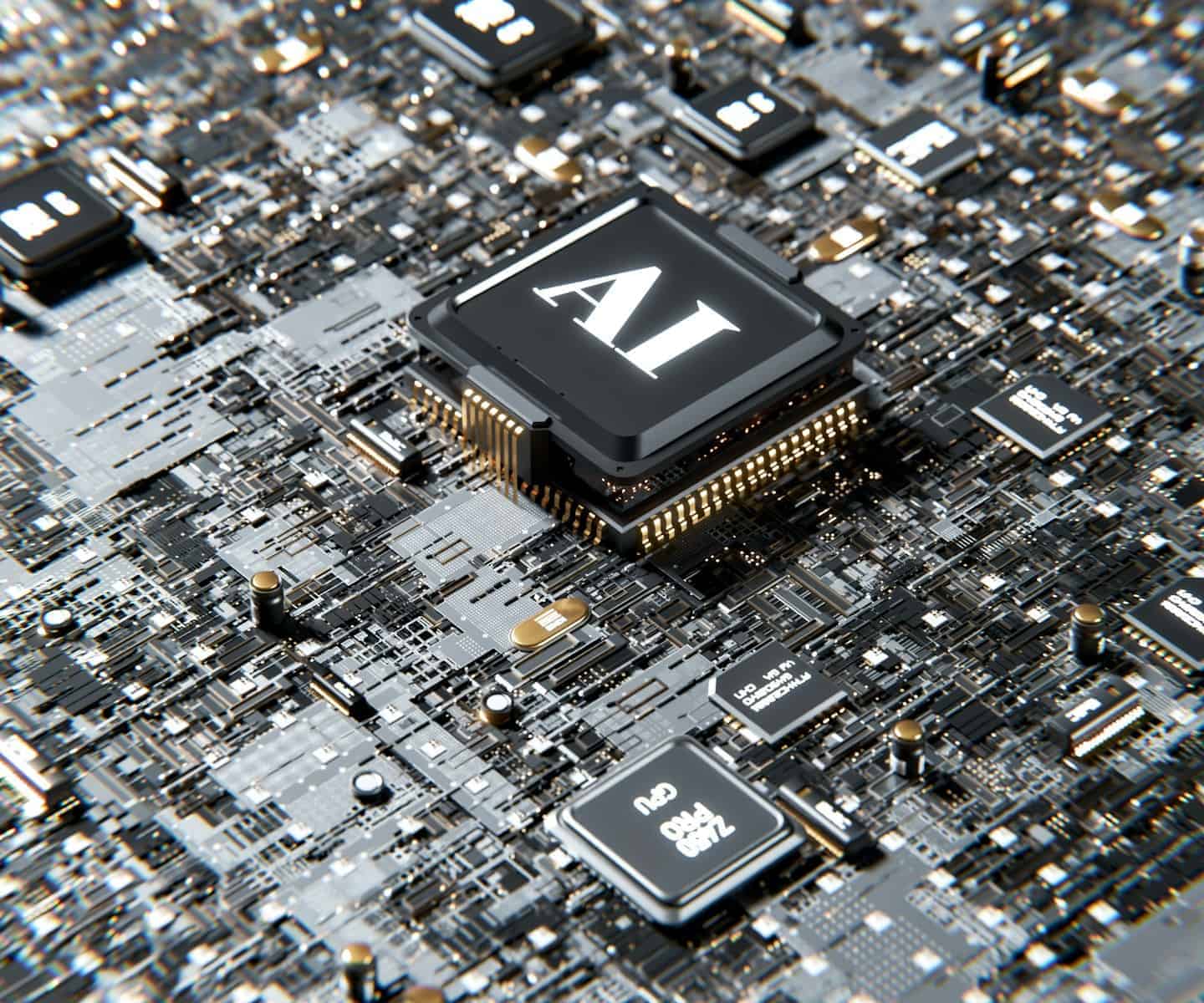Spatial computing is revolutionizing the way we interact with technology, blurring the lines between the physical and digital worlds. In this article, we will explore the concept of spatial computing, how it works, and its diverse applications across various industries.
From gaming and entertainment to healthcare and manufacturing, spatial computing is reshaping the way we live, work, and play. We will take a look at the top companies at the forefront of this cutting-edge technology, including Microsoft, Google, Apple, and more. Join us as we dive into the world of spatial computing and its impact on our future.
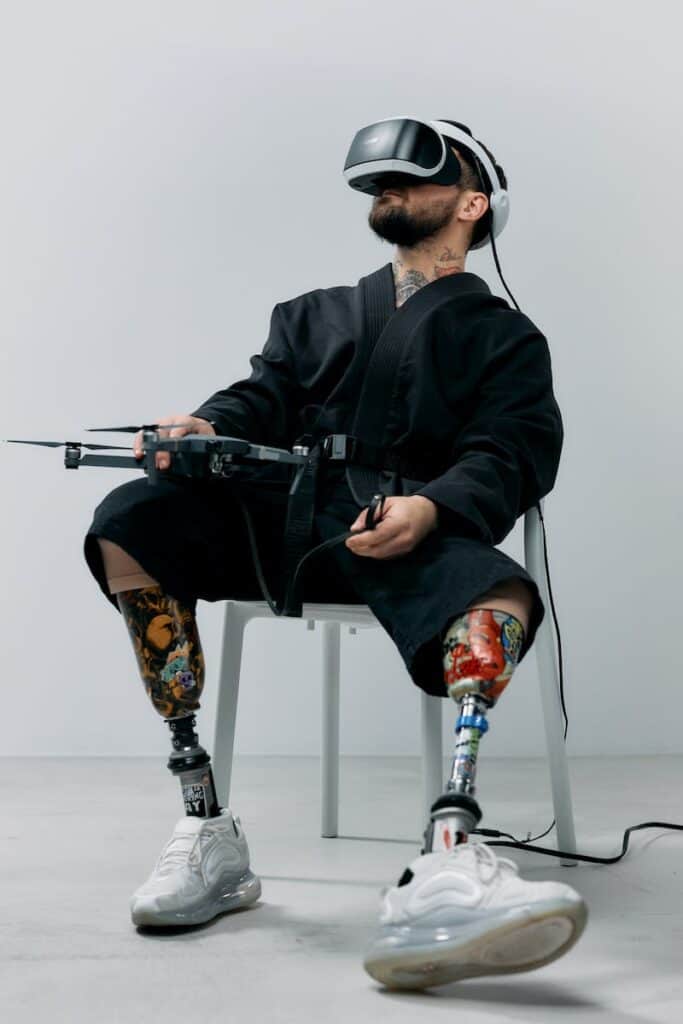
Top Companies Spatial Computing
| Company | Focus | Products/Services | Notable Features |
|---|---|---|---|
| Magic Leap | Enterprise AR | AR headsets, software development tools | High-resolution visuals, lightweight design, hand tracking, spatial mapping |
| Microsoft | Enterprise & consumer AR | HoloLens AR headsets, Mixed Reality Toolkit | Wide range of enterprise applications, developer support, spatial mapping |
| Meta (formerly Facebook) | Consumer AR/VR | Quest VR headsets, Project Cambria AR/VR headset | Social VR experiences, fitness applications, metaverse development |
| Mobile AR | ARCore software library, Project Starline video chat booths | Integration with Android devices, realistic 3D object placement, immersive video conferencing | |
| Apple | Mobile AR & rumored AR headset | ARKit software library, rumored AR/VR headset | Integration with iPhones and iPads, focus on privacy and user experience |
| Xpeng | Automotive AR | In-car AR displays, autonomous driving technology | Head-up displays, augmented réalité, navigation overlays |
| Waymo | Automotive AR | Self-driving vehicles, AR navigation systems | Integration with real-time traffic data, obstacle detection and avoidance |
| HoloLens 2 | Enterprise AR | AR headset | Wide field of view, hand tracking, spatial mapping |
| Matterport | 3D capture & visualization | 3D capture cameras, cloud platform | High-fidelity 3D scans, virtual tours, spatial data management |
| NVIDIA | Cloud XR & AI for Metaverse | CloudXR streaming platform, Omniverse metaverse simulation engine | Real-time graphics rendering, AI-powered virtual assistants, collaborative creation tools |
Key Takeaways:
- Spatial computing is a technology that integrates the physical and digital worlds through computer-generated graphics and sensory input.
- Top companies in the spatial computing industry include Microsoft, Magic Leap, Google, and Apple.
- Applications of spatial computing span across various industries such as gaming, education, healthcare, retail, and military.
What Is Spatial Computing?
Spatial computing is an advanced technology that integrates artificial intelligence and immersive experiences to bridge the physical and digital worlds, offering innovative human-computer interactions through spatial mapping and virtual, augmented, and mixed realities.
This technology has revolutionized the way we perceive and interact with the environment, blurring the lines between digital information and physical space. By leveraging complex spatial mapping, AI-powered systems can seamlessly integrate virtual objects into the real-world environment, enhancing our understanding of spatial relationships and enabling interactive experiences that were previously unimaginable.
The fusion of virtual, augmented, and mixed realities opens up a myriad of possibilities across various industries, including education, healthcare, entertainment, and industrial design. It allows for immersive simulations, interactive visualizations, and enhanced training experiences, thereby redefining how we approach tasks and activities in the digital age.
How Does Spatial Computing Work?
Spatial computing operates through a combination of specialized sensors, cutting-edge hardware, and sophisticated software to process and render digital content, creating immersive spatial experiences that seamlessly blend with the physical world.
The sensors utilized in spatial computing include a variety of technologies such as depth cameras, LiDAR, and infrared sensors to capture real-time information about the physical environment. These sensors enable devices to understand and interpret the surrounding space, allowing for accurate spatial mapping and tracking of objects and users.
The hardware component comprises powerful processors, memory, and graphics capabilities to handle the intensive computational tasks required for spatial computing. This integration supports the seamless fusion of physical and digital environments, offering users a truly immersive and interactive experience.
What Are the Applications of Spatial Computing?
The applications of spatial computing are diverse, ranging from facilitating virtual meetings and creating digital twins of physical assets to revolutionizing entertainment through spatial cinema experiences, all while driving technological advancements and AI integration.
Virtual meetings have been greatly enhanced by spatial computing, allowing for immersive and interactive collaborative environments that transcend the limitations of traditional video conferencing.
Digital twin technology, enabled by spatial computing, has transformed the way businesses manage and optimize their physical assets, leading to increased efficiency and cost savings.
Spatial computing has redefined entertainment experiences by offering unprecedented levels of immersion and interactivity, fueling the growth of spatial cinema and interactive, AI-driven gaming and storytelling.
As spatial computing continues to evolve, its potential applications in various industries and everyday life are boundless, shaping the future of human-technology interaction.
| Feature | Description | Example |
|---|---|---|
| Definition | Human-computer interaction techniques perceived in the real world, around the natural body and environment, instead of confined to screens. | Using hand gestures to manipulate 3D holograms on a table. |
| Key Technologies | Computer vision, sensor fusion, augmented reality (AR), virtual reality (VR), mixed reality (MR), spatial mapping, 3D reconstruction. | Wearables, gaming, navigation, and autonomous driving. |
| Benefits | More natural and intuitive interaction, enhanced collaboration, improved visualization, access to virtual information in physical spaces. | Architect collaboratively designing a building in AR or surgeon viewing medical scans overlaid on a patient in MR. |
| Challenges | Hardware limitations (e.g., processing power, battery life), software development complexity, user adoption, potential safety and privacy concerns. | Ensuring AR glasses are comfortable and affordable, creating intuitive and engaging spatial computing experiences. |
| Applications | Gaming, entertainment, education, training, design, manufacturing, healthcare, retail, field service, military. | Playing an immersive AR game, attending a virtual meeting in VR, visualizing design concepts in 3D, practicing surgery in VR. |
| Future Outlook | Rapidly evolving field with significant potential to transform how we interact with technology and the world around us. | Advancements in hardware, software, and content creation will unlock new possibilities for spatial computing experiences. |
Gaming and Entertainment
Spatial computing has redefined gaming and entertainment by offering immersive experiences through virtual reality, leveraging advanced spatial mapping technologies to create engaging and interactive digital environments.
This transformative technology has revolutionized the way users engage with content, bridging the gap between the physical and digital worlds.
The incorporation of spatial mapping has enabled developers to craft game environments that respond to the physical space around the player, enhancing the overall gaming experience.
The integration of virtual reality applications has opened doors to unprecedented levels of immersion, allowing users to step into realistic and captivating virtual worlds.
Education and Training
Spatial computing has revolutionized education and training by harnessing immersive technologies, AI, and machine learning to create interactive and engaging learning environments, enhancing the overall educational experience.
This transformation has significantly impacted the conventional methods of teaching and learning. Immersive technologies such as virtual and augmented reality enable students to explore and interact with 3D visualizations, making complex concepts more comprehensible.
AI-driven learning experiences provide personalized and adaptive learning paths, catering to individual student needs, while interactive training modules facilitate hands-on practice and skill development, preparing learners for real-world challenges. The integration of spatial computing in education and training signifies a shift towards experiential and dynamic learning, fostering a more effective and engaging approach to knowledge acquisition.
Healthcare
In healthcare, spatial computing offers groundbreaking solutions by leveraging spatial data, AI integration, and virtual reality to enhance human interaction, improve diagnostics, and revolutionize medical procedures.
By harnessing spatial data, healthcare professionals can gain comprehensive insights into patient care and facility management. Spatial computing’s use of AI-driven diagnostics enables rapid and accurate analysis of medical images and patient data, leading to more efficient treatment planning and personalized care.
Virtual reality applications in healthcare allow for immersive training experiences, patient education, and therapeutic interventions, fostering improved recovery and well-being. The transformative potential of spatial computing lies in its ability to create more intuitive and effective tools for medical professionals and enhance the overall patient experience.
Manufacturing and Design
Spatial computing has redefined manufacturing and design processes by integrating spatial mapping, sensor technologies, and digital twins, enhancing productivity, streamlining workflows, and enabling advanced simulations.
This transformation has revolutionized the way products are developed, allowing for more efficient use of resources and a reduction in time-to-market.
Spatial mapping technologies enable accurate mapping of physical spaces, facilitating effective layout planning and optimization of floor space.
Sensor integration enhances real-time monitoring and data collection, contributing to improved quality control and predictive maintenance.
Digital twins support the creation of virtual replicas, providing valuable insights for design validation and performance optimization.
Retail and E-commerce
In retail and e-commerce, spatial computing is revolutionizing consumer experiences through AI-driven virtual environments, immersive technologies, and interactive product showcases, redefining the shopping and purchasing journey.
By leveraging spatial computing, retailers can offer personalized and tailored experiences to shoppers, allowing them to virtually explore products and environments. AI algorithms enable the creation of hyper-realistic simulations that enhance the visualization of products, thereby increasing consumer engagement and confidence in making purchase decisions.
Virtual try-on experiences and interactive fitting rooms powered by spatial computing technologies further bridge the gap between online shopping and physical retail, providing an innovative approach to the shopping experience.
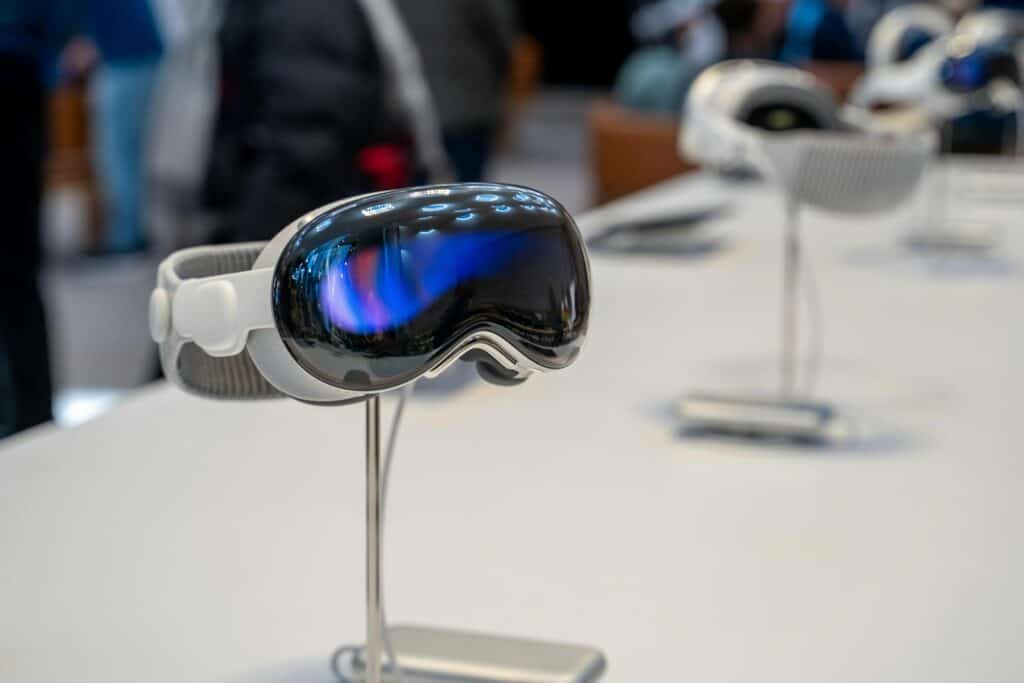
Military and Defense
Spatial computing has transformed military and defense operations through the integration of spatial data, immersive technologies, and AI-driven solutions, enhancing situational awareness and mission-critical decision-making.
This technology enables real-time mapping of terrains, tracking troop movements, and analyzing enemy positions, providing commanders with a comprehensive view of the battlefield.
Furthermore, spatial computing facilitates the simulation of complex scenarios, training soldiers in realistic virtual environments to prepare them for diverse combat situations.
The use of AI algorithms helps in processing vast amounts of spatial data to identify patterns, potential threats, and opportunities, aiding in strategic planning and operational effectiveness.
What Are the Top Companies in the Spatial Computing Industry?
The spatial computing industry is dominated by technology giants such as Meta, Microsoft, Apple, Google, Amazon, Tesla, and Facebook, each driving innovative products and experiences that shape the future of spatial computing.
Meta, formerly known as Facebook, is at the forefront of spatial computing, with products like Oculus VR devices and the development of the metaverse. Microsoft’s HoloLens and mixed reality technology have revolutionized enterprise applications, while Apple’s ARKit and rumored AR glasses demonstrate their commitment to augmented reality.
Google’s ARCore and Project Glass also showcase their dedication to spatial technologies. Amazon has ventured into spatial computing with Amazon Sumerian and its integration with AWS, and Tesla’s self-driving technology leverages spatial data for advanced navigation. Facebook’s partnership with Ray-Ban for smart glasses and its horizon of virtual experiences further establish its influence in the spatial computing landscape.
Microsoft
Microsoft has emerged as a key player in the spatial computing landscape, with initiatives like Meta Workrooms and pioneering AI-driven technologies that redefine spatial experiences and productivity tools.
By integrating innovative product offerings such as HoloLens and the Microsoft Mesh platform, Microsoft has demonstrated its commitment to shaping the future of spatial computing.
Embracing the potential of mixed reality and AI integration, Microsoft continues to lead the way in creating immersive and collaborative environments for work and play. Their strategic partnerships and industry leadership further solidify their influence in driving the evolution of spatial computing technology.
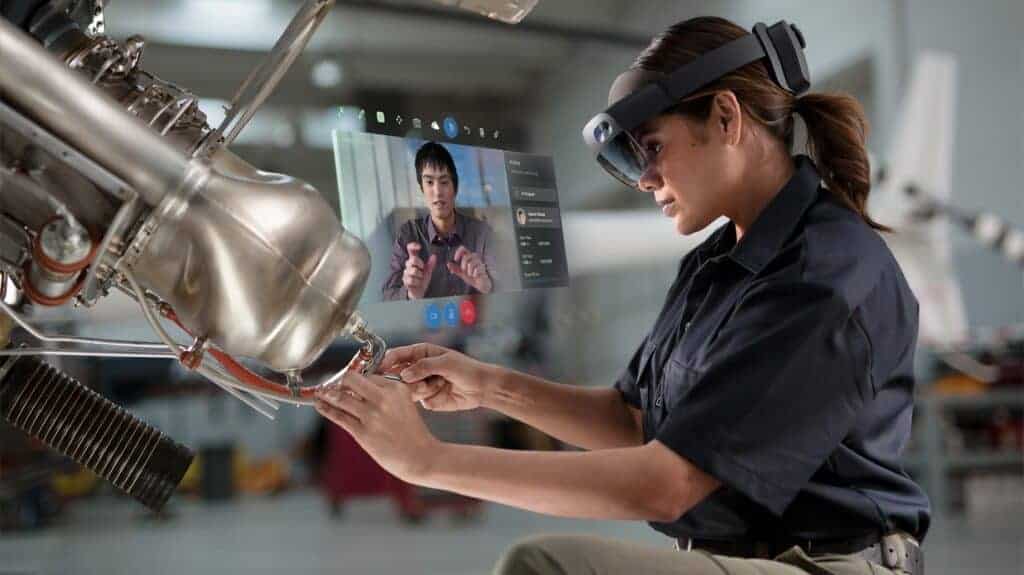
Magic Leap
Magic Leap stands at the forefront of spatial computing innovation, leveraging cutting-edge technology and Generative AI to create captivating spatial experiences, under the leadership of visionaries like Simon Greenwold.
Magic Leap has revolutionized the way people engage with digital content in the physical world through its advancements in spatial computing. By incorporating Generative AI, they have created immersive and interactive experiences that seamlessly merge with real-world environments, setting a new benchmark for spatial computing technology.
Google has made significant strides in spatial computing, integrating AI technologies and driving industry trends, as evidenced by innovations like Google Lens and the expertise of visionaries like Simon Greenwold.
By leveraging its advanced AI integration, Google has fundamentally transformed spatial computing, setting new benchmarks for technological advancements in this domain. Its groundbreaking innovations have redefined the way we interact with the digital world, pioneering the convergence of reality and digital information.
With the proliferation of Google Lens, users can seamlessly access contextual information, bridging the gap between physical and digital experiences. The influence of Google on spatial computing is undeniable, shaping the trajectory of this transformative technology and propelling it into the mainstream.
With a keen focus on user experience and AI-driven functionalities, Google has emerged as a trailblazer in this space, demonstrating a clear vision for the future of spatial computing. Its commitment to innovation continues to drive the evolution of this exciting and impactful technology landscape.
Apple
Apple has cemented its position in spatial computing with a focus on AR, VR, and AI technologies, exemplified by Meta Quest 3 and the visionary leadership of industry figureheads like Tim Cook.
Apple’s commitment to spatial computing is evident in its innovative products and forward-looking strategies.
The integration of ARKit and CoreML into its devices has revolutionized the way we interact with technology and our environment. Apple Glasses are poised to set new standards in augmented reality, while its advancements in virtual reality through the rumoured Apple VR headset have the industry abuzz.
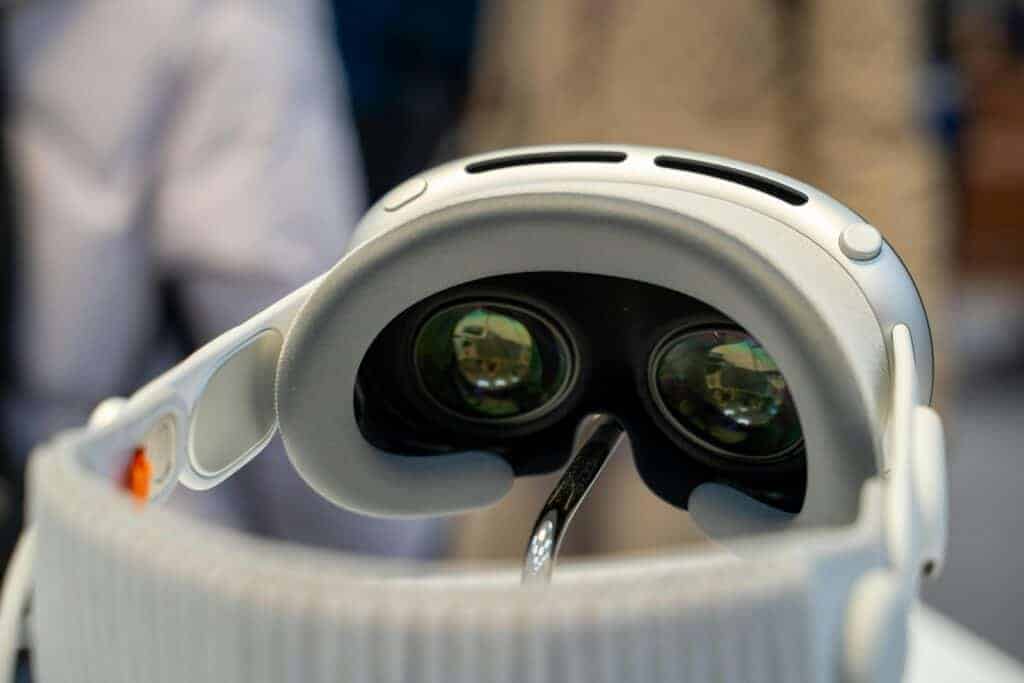
Under the umbrella of Meta, Facebook has spearheaded spatial computing innovations, including the Meta Quest 3, leveraging the expertise of leaders like Andrew Bosworth to drive immersive experiences and technological advancements.
These innovations highlight Facebook’s vision to create a seamless blend between the digital and physical worlds. Meta’s commitment to spatial computing goes beyond hardware, as it extends to the development of software and platforms that enable users to interact with their surroundings in new, immersive ways.
The Meta Quest 3, for instance, represents a leap forward in the evolution of virtual and augmented reality. This groundbreaking device bridges the gap between fictional digital realms and real-world environments, creating a seamless and compelling user experience.
Andrew Bosworth’s leadership has been instrumental in steering Meta’s efforts towards the convergence of technology and human interaction, ensuring that immersive experiences are not just novel but also intuitive and impactful.
NVIDIA
NVIDIA has made substantial contributions to spatial computing by leveraging advanced technologies and AI to enhance VR headsets and gaming experiences, solidifying its position as a key player in the industry.
By integrating artificial intelligence into their hardware and software, NVIDIA has enabled more immersive and realistic virtual environments. Their commitment to advancing spatial computing has revolutionized the way we interact with virtual worlds, pushing the boundaries of what is possible in VR.
NVIDIA’s focus on developing powerful graphics processing units (GPUs) has been instrumental in delivering stunning visual experiences, making them a standout choice for gamers and VR enthusiasts alike.
Unity Technologies
Unity Technologies plays a pivotal role in spatial computing, give the power toing developers with immersive technologies and gaming solutions, driving the creation of captivating digital content and interactive experiences.
Unity Technologies has revolutionized the gaming industry by providing a versatile platform for developers. They offer a plethora of tools and resources to craft cutting-edge immersive experiences. Their commitment to improving spatial computing has led to the development of advanced VR and AR solutions, enabling developers to create interactive and engaging content that blurs the line between reality and virtuality.
With Unity at the forefront, the possibilities for innovative and boundary-pushing digital content creation are endless. They are shaping the future of immersive technologies, offering endless potential for immersive experiences.
Intel
Intel’s advancements in spatial computing and AI have paved the way for innovative virtual meeting solutions and wearable technologies, solidifying its position as a key player in the evolving spatial computing landscape.
The integration of AI-driven innovations by Intel has resulted in groundbreaking developments in spatial computing. Through their commitment to technological advancements, Intel has been able to harness the power of AI to enhance virtual meeting solutions and create cutting-edge wearables that align with the demands of modern consumers.
Their dedication to pushing the boundaries of spatial computing demonstrates their forward-thinking approach and commitment to shaping the future of technology.
Sony
Sony has made significant strides in spatial computing, particularly in the realm of VR headsets, gaming experiences, and immersive entertainment, showcasing its commitment to driving technological innovations and captivating experiences.
This has been most evident in Sony’s development of PlayStation VR, a key player in the VR headset market, providing gamers with a truly immersive gaming experience. The company’s dedication to advancing gaming technology has also led to the creation of innovative controllers and peripherals, enhancing the overall gaming experience.
Sony’s foray into immersive entertainment extends beyond gaming, with the introduction of virtual reality experiences that transport users to new worlds and narratives, further solidifying its position as a leader in the spatial computing landscape.
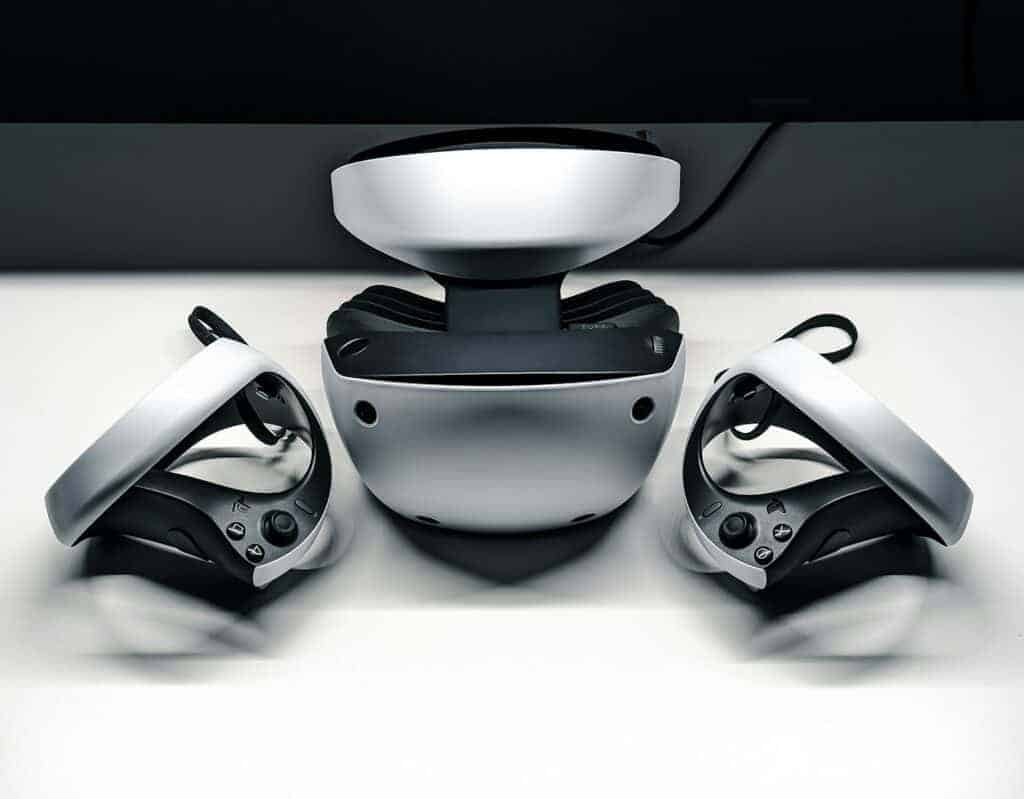
PTC
PTC’s focus on spatial computing technologies, particularly digital twin solutions and AR integration in manufacturing, underscores its commitment to driving innovation and transformative solutions in the industry.
These technologies have revolutionized the way manufacturing processes are viewed and managed. By utilizing digital twin solutions, PTC has give the power toed companies to create virtual models of physical assets, enhancing maintenance and reducing downtime.
The integration of AR technology has provided advanced visualization and step-by-step guidance during assembly and maintenance tasks, resulting in increased operational efficiency. PTC’s contributions have played a significant role in the evolution of spatial computing and its application in manufacturing.
Frequently Asked Questions
What is Spatial Computing and why is it important?
Spatial Computing is a technology that combines the physical and digital worlds, creating a more immersive and interactive experience. It is important because it has the potential to revolutionize the way we interact with technology, leading to more efficient and effective decision making.
Which companies are leading the way in Spatial Computing?
Some of the top companies taking over the world of Spatial Computing include Microsoft, Magic Leap, Google, Oculus VR, and Apple. These companies are investing heavily in research and development to advance and improve the technology.
How is Spatial Computing being used in different industries?
Spatial Computing is being used in various industries, including healthcare, gaming, retail, and construction. In healthcare, it can be used for surgical planning and training, while in gaming, it can create a more immersive experience. In retail, it can enhance the shopping experience, and in construction, it can aid in design and visualization.
What are the benefits of Spatial Computing for businesses?
Spatial Computing can provide businesses with a competitive advantage by improving efficiency, reducing costs, and enhancing customer experiences. It can also open up new possibilities for data visualization and analysis, leading to better decision making.
What are some challenges facing the adoption of Spatial Computing?
One of the main challenges facing the adoption of Spatial Computing is the high cost of equipment and development. Additionally, there may be concerns about data privacy and security as this technology collects and processes large amounts of personal data.
How is Spatial Computing evolving and what can we expect in the future?
Spatial Computing is constantly evolving and advancing, with new features and capabilities being developed. In the future, we can expect to see more widespread adoption of this technology, as well as further integration into our daily lives through devices such as smart glasses and virtual assistants. There will also likely be advancements in data processing and artificial intelligence, making Spatial Computing even more powerful and efficient.
